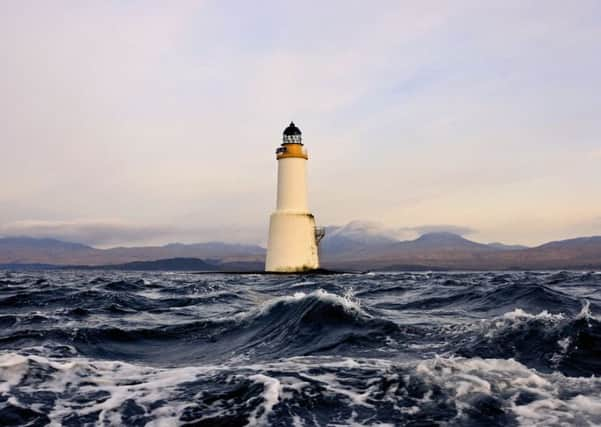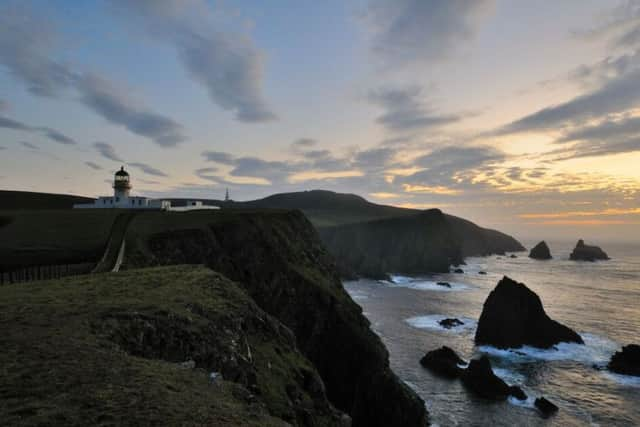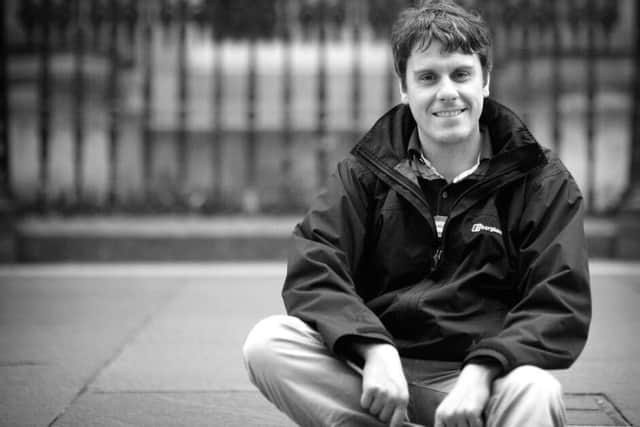Daring acts of the Stevenson lighthouse builders


Now in a tribute to some of the most daring engineering acts of the 19th century, a photographer and lighthouse enthusiast has spent the last seven years tracing the works of Glasgow-born Robert Stevenson and his descendants.
Ian Cowe, 40, travelled by boat, helicopter, plane and on foot, to capture the 96 lighthouses that were built to bring to an end the shipwrecks and dead mariners that scattered the seas around Scotland.
Advertisement
Hide AdAdvertisement
Hide AdMr Cowe’s work is now to be published in Scottish and Manx Lighthouses: A Photographic Journey in the footsteps of the Stevensons, this week.


The book has been published in conjunction with the Northern Lighthouse Board, which manages the upkeep of Scotland’s 100 or so working lighthouses.
Mr Cowe, a lecturer in oil and gas health and safety at Robert Gordon University, said he had been interested in lighthouses since he was a boy growing up in Peterhead.
He said: “I am from a north east sea faring community and my dad and grandad were both fishermen.
“It was my grandfather who would often talk about the manning of the lighthouses and the way they were built.


“In my twenties I did a lot of travelling around the world but I realised I hadn’t seen a lot of Scotland. I fancied going to see some of the lighthouses over on the Hebrides and the whole thing just grew arms and legs from there.”
Lighthouse building began in Scotland in the 17th century but it was with the formation of the Northern Lighthouse Board in 1786 that unified work to light the Scottish coast began.
Robert Stevenson, who had worked as an apprentice to his engineer stepfather at the board, was appointed as an engineer in 1797.
Advertisement
Hide AdAdvertisement
Hide AdHis most ambition project was to be for the Bell Rock lighthouse near Arbroath, which was co-designed with the board’s chief engineer John Rennie.
In 1807, Stevenson and a team of workers set sail for the rock. The squad could work only two hours either side of low tide and lived on a ship moored a mile away.
The structure was ultimately to stand 30 metres high on a ragged sandstone reef and this feat of engineering still stands strong to guide mariner to safety off the Angus coast.
Mr Cowe said he had been “struck” by the bravery of Stevenson and his team of men.
He said: “At the Bell Rock and Skerryvore (off Tiree), the Stevensons lived with the men on the rock where they were building. They endured the same conditions and they clearly had some lucky escapes at time with storms and boats breaking off their moorings.
“When you see some of these lighthouses, you do really wonder how they managed to manoeuvre these really massive slabs of stone into position in these really remote places. Later they had steam winches, but it was not always the way.”
Mr Cowe started his journey at the small lighthouse perched on the soaring cliffs of St Abbs Head on the east coast and ended at Chicken Rock, a spectacular sea-washed granite pillar off the southern tip of the Isle of Man.
On the way he visited numerous lighthouses including Dubh Artach, which sits 18 miles west of Colonsay.
Advertisement
Hide AdAdvertisement
Hide AdDubh Artach - or Black Rock - was built by Robert Stevenson’s son Thomas - the father of novelist Robert Louis Stevenson.
In 1872, RLS penned a 4,800-word essay about the building of Dubh Artach that remained unpublished until the mid 1990s.
RLS described it as “an ugly reef” before adding: “No other life was there but that of sea-birds, and of the sea itself, that here ran like a millrace, and growled about the outer reef for ever, and ever and again, in the calmest weather, roared and spouted on the rock itself”. Not a place to visit - even on the calmest of days.”
Princes Anne, as patron of the Northern Lighthouse Board, has paid tribute to Mr Cowe’s work on the Stevensons.
She said: “Ian Cowe’s journey by foot, car, boat, plane and helicopter around our coast capturing the great lights built by the Stevenson engineers shows a real dedication.
“Their buildings, their remoteness and exceptional natural beauty have been captured.
“The lighthouses stand testament tot eh dedicated work of the Stevenson engineers - built to last for the benefit of the mariner.”